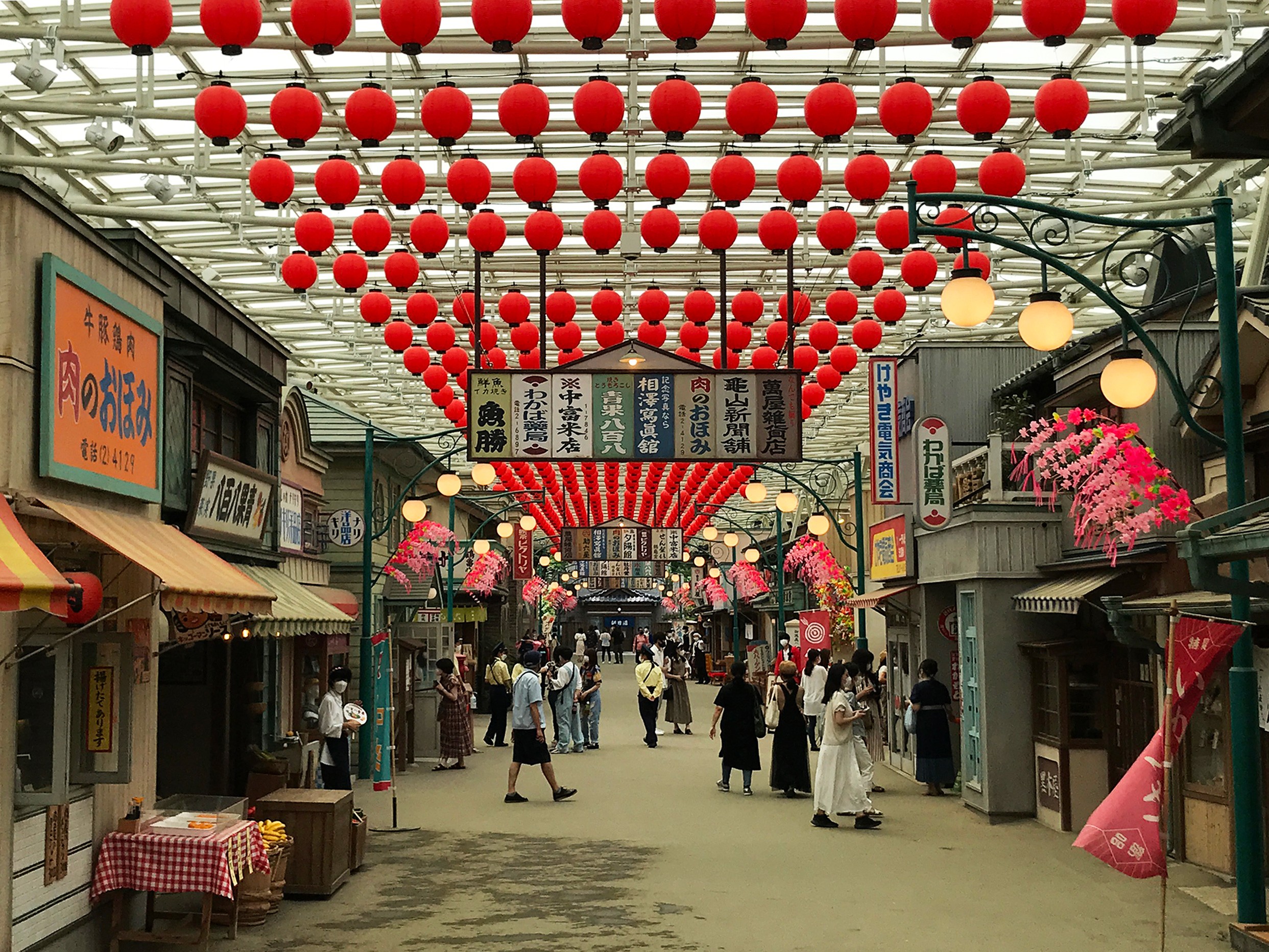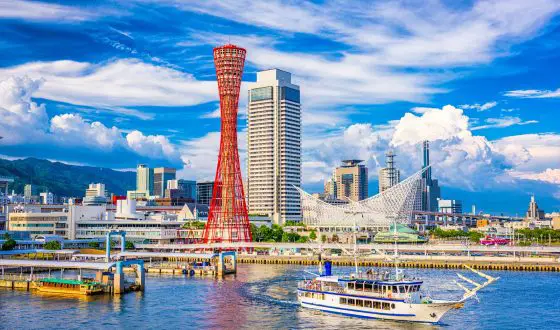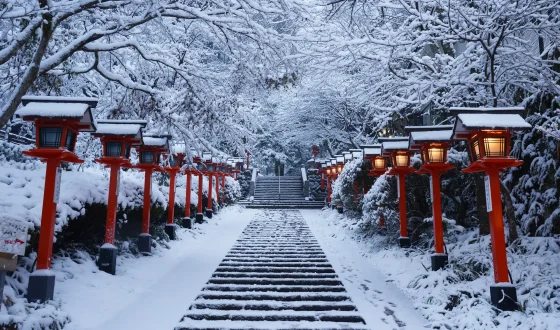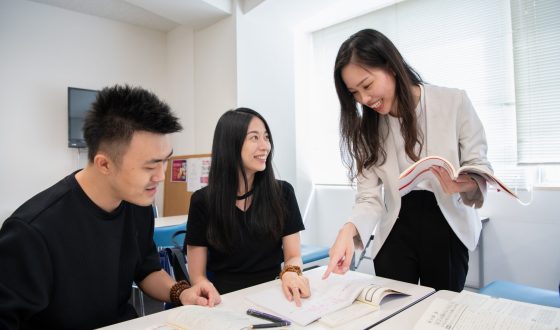Best Things To Do in Saitama
Although Saitama, the prefecture next to Tokyo, is less well-known to international tourists, it offers many tourist attractions, including the historical town of Kawagoe, lovely cherry blossom viewing locations, and other more unusual sites to explore.
Since the prefecture is easily accessible from Tokyo, Saitama is known for being a commuter town, and you can visit Saitama even if you stay in central Tokyo. From well-known sites to secret gems, these are things to do in Saitama.
Top 10 Activities in Saitama Prefecture
1. Travel back in time to Kawagoe Edo era
The historical castle town of Kawagoe, often known as “Little Edo” (or “Koedo” in Japanese), is located in Saitama and has an atmosphere evocative of the old Edo era.
The main street is surrounded with historic two-story merchant buildings that still have kurazukuri (clay-walled) architecture and the Toki no Kane bell tower as soon as you depart one of the nearby train stations.
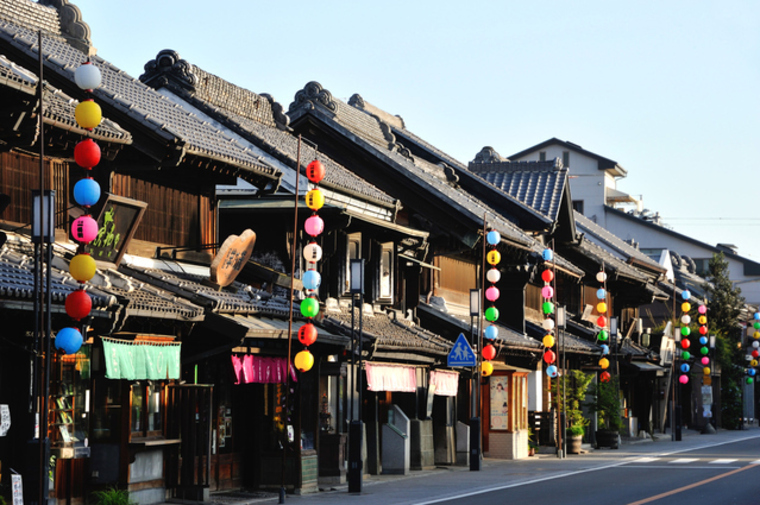
The historical castle town of Kawagoe, often known as “Little Edo” (or “Koedo” in Japanese), is located in Saitama and has an atmosphere evocative of the old Edo era. (Source: Internet)
Numerous traditional shops that sell Japanese sweets, trinkets, crafts, and other products may be found here. There are also historical sites nearby like Kawagoe Castle and Kita-in Temple.
Kawagoe Edo era
Address:1-15-8 Motomachi, Kawagoe City, Saitama
2. Visit the Omiya Bonsai Art Museum to view magnificent bonsai artwork.
The Omiya Bonsai Art Museum, Saitama, is a one-of-a-kind museum devoted to bonsai art and is a part of Omiya Bonsai Village.
More than 120 exquisite bonsai masterpieces and other items connected to bonsai can be found there. About 70 pots of bonsai are always on show in the gallery and garden, with the bonsai on exhibition changing seasonally.
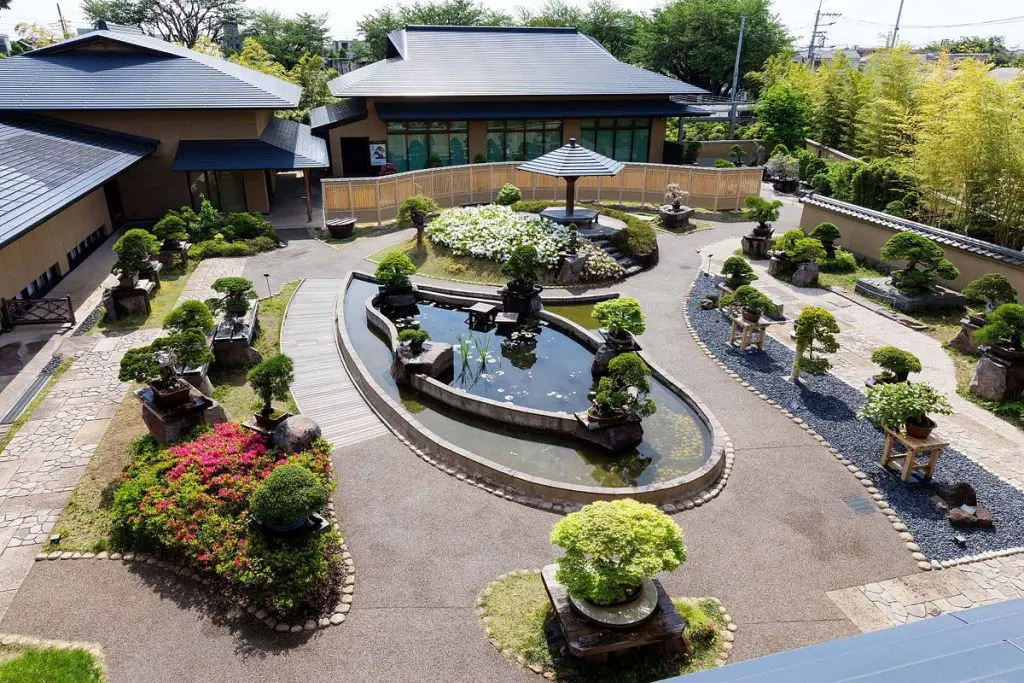
The Omiya Bonsai Art Museum, Saitama, is a one-of-a-kind museum devoted to bonsai art and is a part of Omiya Bonsai Village. (Source: Internet)
In addition to the museum, Omiya Bonsai Village has six bonsai gardens where you may view the various owners’ bonsai creations. The Omiya Bonsai Art Museum’s entrance fee is 310 yen∼2.18 USD for adults, 150 yen∼1.06 USD for senior citizens and students in high school and universities, and 100 yen∼0.70 USD for younger pupils.
From Toro Station on the JR Utsunomiya Line or Omiya-koen Station on the Tobu Noda Line, the museum is only a five-minute walk away.
Omiya Bonsai Art Museum
Address: 2-24-3 Toro-cho, Kita Ward, Saitama City, Saitama
Opening Hours: 9:00 a.m. to 4:30 p.m. from March to October; 9:00 a.m. to 4:00 p.m. from November to February
Closing Days: Thursdays (except for public holidays) and New Year holidays (*also temporarily closed during exhibition preparation)
3. The Railway Museum has information on Japanese trains.
The East Japan Railway Company (JR EAST) launched the Railway Museum in Omiya, Saitama, in October 2007 as a component of its 20th Anniversary Memorial Project.
The museum features five stations inside, and each one provides visitors of all ages with different interactive and educational experiences.
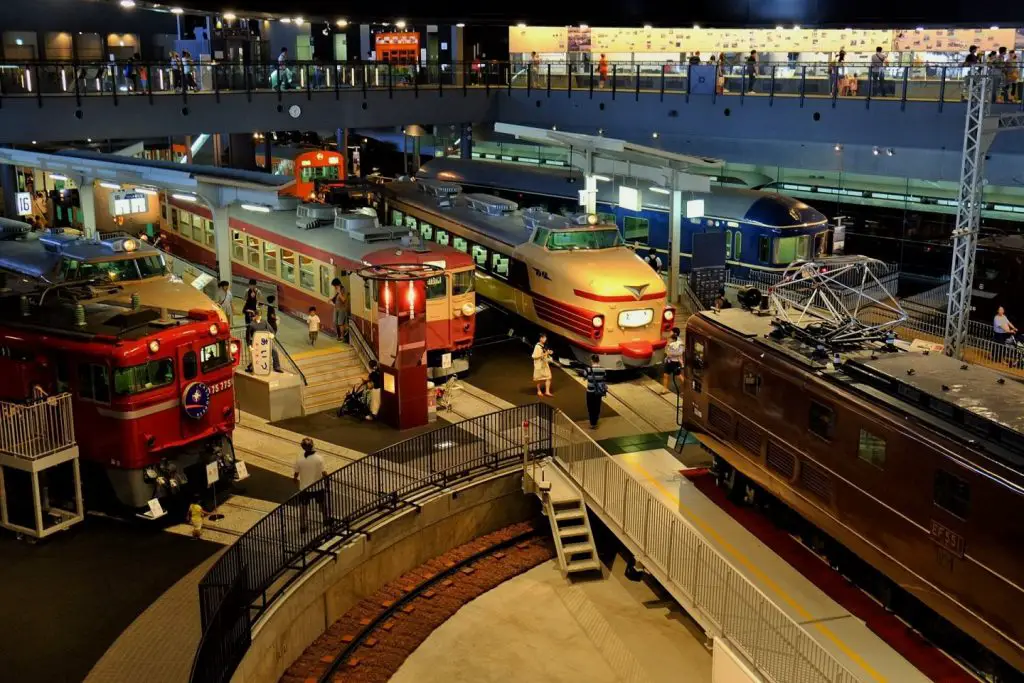
The East Japan Railway Company (JR EAST) launched the Railway Museum in Omiya, Saitama, in October 2007 as a component of its 20th Anniversary Memorial Project. (Source: Internet)
The first locomotive train in Japan and the renowned Shinkansen are on display, and you can find out more about the background of Japanese railroading. Additionally, you have the chance to see firsthand how railway safety operations function.
Adults must pay 1,330 yen∼9.36 USD to enter the Railway Museum; students in elementary, junior high, and high school must pay 620 yen∼4.36 USD; and preschoolers must pay 310 yen∼2.18 USD.
Tetsudo-Hakubutsukan Station, which can be accessed in just three minutes by the New Shuttle from JR Omiya Station, is located right adjacent to the museum.
The Railway Museum
Address: 3-47 Onari-cho, Omiya-ku, Saitama City, Saitama
Opening Hours: 10:00 a.m. to 5:00 p.m.
Closing Days:Tuesdays and New Year holidays
4. Observe Misotsuchi’s surreal icicles for yourself
The three enormous icicles of Chichibu, which create an ethereal atmosphere for visitors to enjoy, are a highlight of winter in Saitama. The Misotsuchi icicles are thought to be the oldest and most famous of the three since they are the only ones that are created naturally from spring water.
Every year, between the middle of January and the middle of February, Misotsuchi’s icicles grow to a maximum width of around 30 meters and a maximum length of about 8 meters. They are a naturally occurring creation, thus their appearance is never the same. The nighttime lighting adds to their allure.
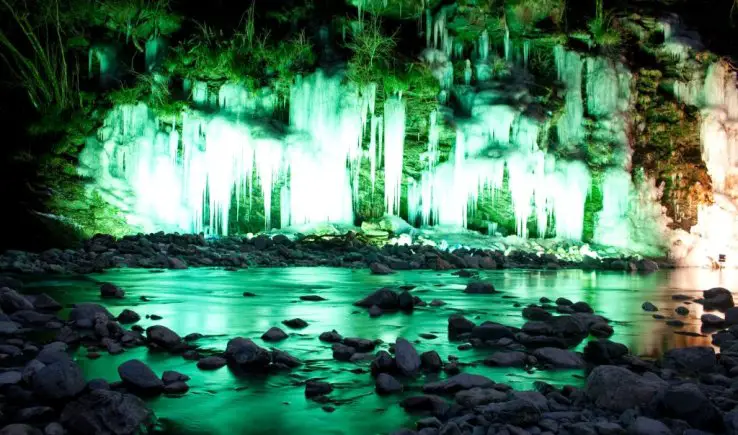
The three enormous icicles of Chichibu, which create an ethereal atmosphere for visitors to enjoy, are a highlight of winter in Saitama. (Source: Internet)
To support the site’s upkeep, a nominal admission fee of 200 yen∼1.41 USD is charged to every person. Take the train to Seibu-Chichibu Station on the Seibu Chichibu Line, then board the Seibu Kanko Bus headed for Mitsumine-Jinja and get off at the Misoba bus stop to reach Misotsuchi’s icicles. The hike to the icicles should take 10 minutes from there.
Misotsuchi
Address: 4066 Otaki, Chichibu City, Saitama
Opening Period: early January to late February (depends on weather conditions)
Closing Days: Tuesdays and New Year holidays
5. Visit Moominvalley Park to explore the endearing Moomins’ world.
Fans of Finnish author Tove Jansson’s Moomin characters will be thrilled to learn that Hanno City, Saitama has a theme park centered around these charming critters that resemble hippopotamuses.
The Tove Jansson Akebono Children’s Forest Park is not to be mistaken with this park, which contains a number of attractions that depict the Moomins’ way of life and surroundings.
Adult admission to Moominvalley Park is 2,500 yen∼17.60 USD (2,300 yen∼16.19 USD with advance purchase), while child admission is 1,500 yen∼10.56 USD (1,300 yen∼9.15 USD for advance ticket purchase).
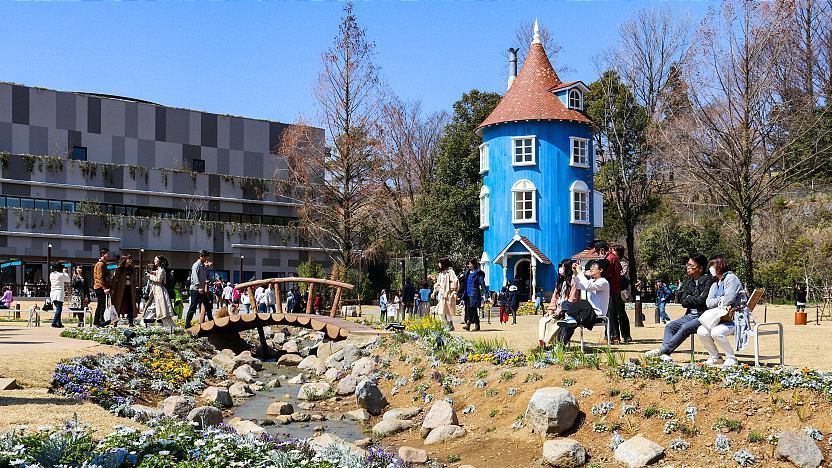
Fans of Finnish author Tove Jansson’s Moomin characters will be thrilled to learn that Hanno City, Saitama has a theme park centered around these charming critters that resemble hippopotamuses. (Source: Internet)
You can also choose to pay 4,200 yen∼29.57 USD for adults (4,000 yen∼28.16 USD for advance ticket purchase) and 2,300 yen∼16.19 USD for kids to get the one-day pass, which includes access to all fee-based amenities (2,100yen∼14.78 USD for advance ticket purchase).
From Hanno Station on the Seibu Ikebukuro Line or Higashi-Hanno Station on the JR Hachiko Line, the park is a 12- or 13-minute bus trip away.
Moominvalley Park
Address: 327-6 Miyatazawa, Hanno City, Saitama
Opening Period: 10:00 a.m. to 5:00 p.m. on weekdays; 10:00 a.m. to 6:00 p.m. on weekends and holidays
Closing Days: year-end and New Year holidays
6. Visit Kinchakuda Manjushage Park to see a carpet of red spider lilies
Red spider lilies, also known as “higanbana” or “manjushage” in Japanese, are a seasonal attraction that draws tourists from around the world to Saitama’s Hidaka City’s Kinchakuda Manjushage Park.
Here, five million red spider lilies bloom, turning the entire region a vibrant crimson color that creates a beautiful autumnal image. The greatest time to see these blooms is from the middle of September until the beginning of October, which is also when the Manjushage Festival is held.
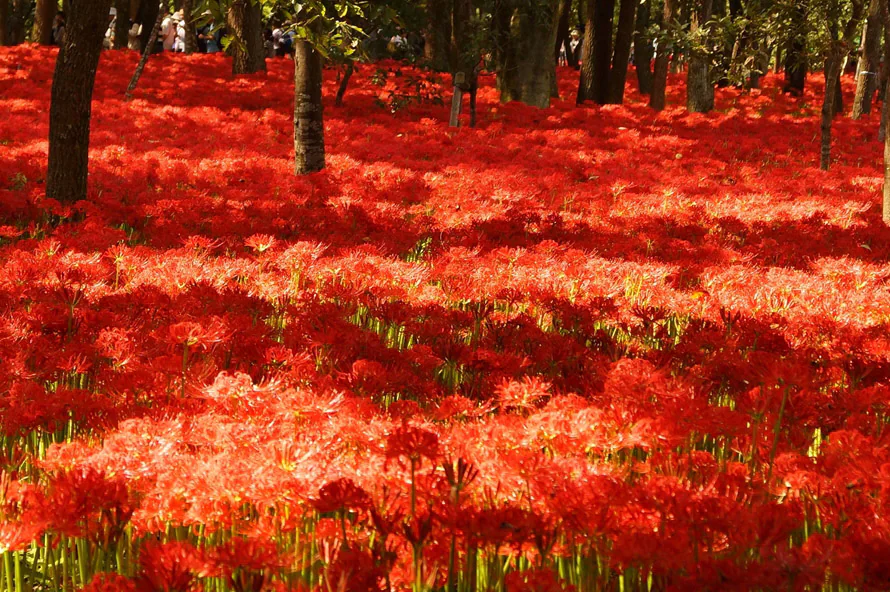
Red spider lilies, also known as “higanbana” or “manjushage” in Japanese, are a seasonal attraction that draws tourists from around the world to Saitama’s Hidaka City’s Kinchakuda Manjushage Park. (Source: Internet)
In addition to the red spider lilies, the park boasts a cosmos field in the fall. Rape blooms in the spring and hydrangeas in the summer are some of the other seasonal flowers that bloom here.
During the festival, adults must pay 300 yen∼ 2.11 USD to enter the park; junior high school students and under are admitted free of charge.
Kinchakuda Manjushage Park
Address: 125-2 Oaza Komahongo, Hidaka City, Saitama
Opening Period: 8:00 a.m. to 5:00 p.m.
You can like this post:
- Where Is Japan Earthquake Epicenter Location?
- Average Apartment Size in Tokyo – The Answer May Surprise You
- Hooking up in Japan: The Strange and Surprising Reality
7. Make a wish for love at Kawagoe Hikawa Shrine
Kawagoe Hikawa Shrine in Kawagoe City, Saitama is well recognized for being a powerful location for love, relationships, and marriage. It has a roughly 1,500-year history. People gather here to pray and seek blessings of love.
Some people even make miniature wooden plates (“ema” in Japanese) on which they write their prayers and then devote them to a tunnel shrine. Here you may also buy lucky things like stones and charms for finding love.
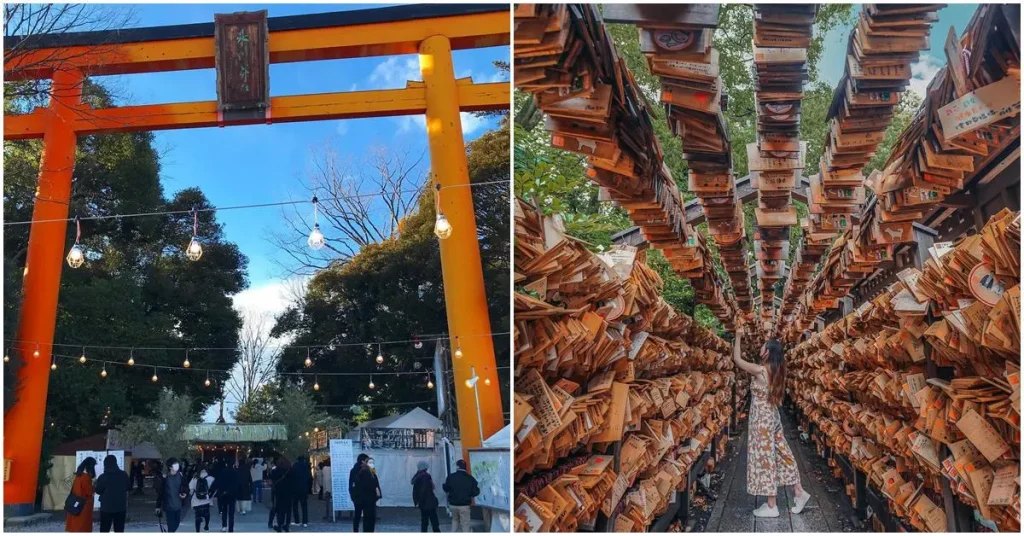
Kawagoe Hikawa Shrine in Kawagoe City, Saitama is well recognized for being a powerful location for love, relationships, and marriage. (Source: Internet)
During the Enmusubi Wind Chime Festival, which takes place in the summer, 2,000 wind chimes of various colors are lined up along a 10-meter hallway inside the temple. Every time the wind blows, they produce a wonderful sound.
Take a train to Kawagoe Station on the JR Kawagoe Line or the Tobu Tojo Line to get to Kawagoe Hikawa Shrine. Take the Tobu Bus heading toward Shimmeicho from there, getting off at Kitamachi. The pilgrimage site is a five-minute walk from the bus station.
Kawagoe Hikawa Shrine
Address: 2-11-3 Miyashitamachi, Kawagoe City, Saitama
Opening Period: 9:00 a.m. to 5:00 p.m.
8. AEON LakeTown is a great place to shop
A location in Saitama that you shouldn’t skip if you’re seeking to do some serious shopping is AEON LakeTown. This enormous shopping center, which has three distinct sections called kaze, mori, and LakeTown OUTLET, is located close to a lake, hence the name. There are more than 700 stores and eateries in this area, along with a theater complex.

A location in Saitama that you shouldn’t skip if you’re seeking to do some serious shopping is AEON LakeTown. (Source: Internet)
Due to its proximity to Koshigaya-Laketown Station on the JR Musashino Line, AEON LakeTown is quite convenient.
- AEON LakeTown kaze
Address: 4-2-2 LakeTown, Koshigaya City, Saitama
Opening Period: 10:00 a.m. to 8:00 p.m.
Closing Days: Holidays at year’s end and the New Year
AEON LakeTown mori
Address: 4-2-2 LakeTown, Koshigaya City, Saitama
Opening Period: 10:00 a.m. to 8:00 p.m.
Closing Days: Holidays at year’s end and the New Year
- AEON LakeTown OUTLET
Address: 4-2-2 LakeTown, Koshigaya City, Saitama
Opening Period:10:00 a.m. to 8:00 p.m.
Closing Days: year-end and New Year holidays
9. Visit Johnson Town, a small piece of America in Japan.
Johnson Village, a small section of Iruma City that resembles a 1950s American town, is located close to Iruma Air Base. Here you can find Western-style residential homes with vintage cars parked outside, vintage and antique shops selling novelty things, cafes and restaurants serving burgers and apple pie, and more.
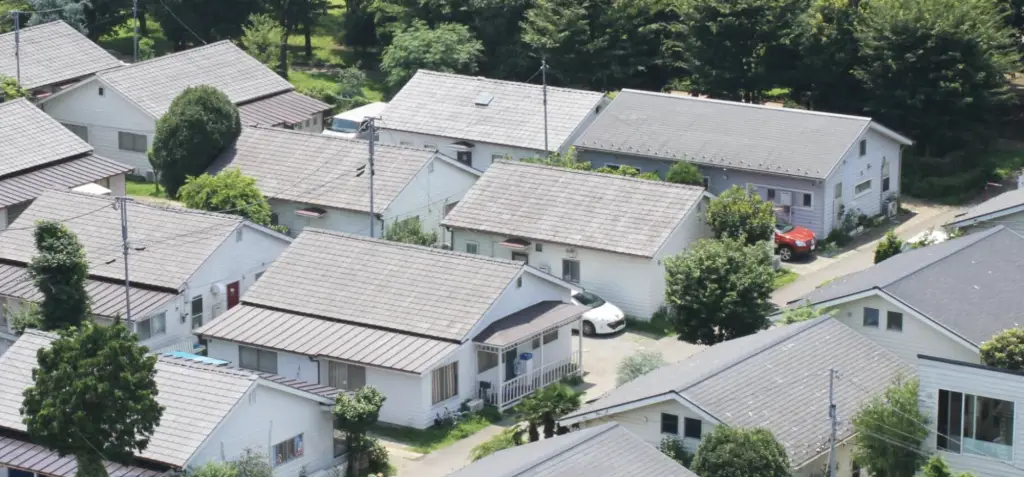
Johnson Village, a small section of Iruma City that resembles a 1950s American town, is located close to Iruma Air Base. (Source: Internet)
Be aware that although American culture is prevalent in the community, most business owners are Japanese. The Seibu Ikebukuro Line’s Irumashi Station is just 15 minutes on foot from Johnson Town.
Johnson Town
Address: 1-6-1 Azumacho, Iruma City, Saitam
10. Enter the 1960s Seibuen Amusement Park in Tokyo
Seibuen Amusement Park in Tokorozawa, Saitama, reopened as a theme park from the Showa era that was inspired by Tokyo in the 1960s after receiving a significant renovation. The Ferris wheel, a carousel, and a brand-new Godzilla ride are among the local attractions. Additionally, there is live street entertainment that will amuse guests.
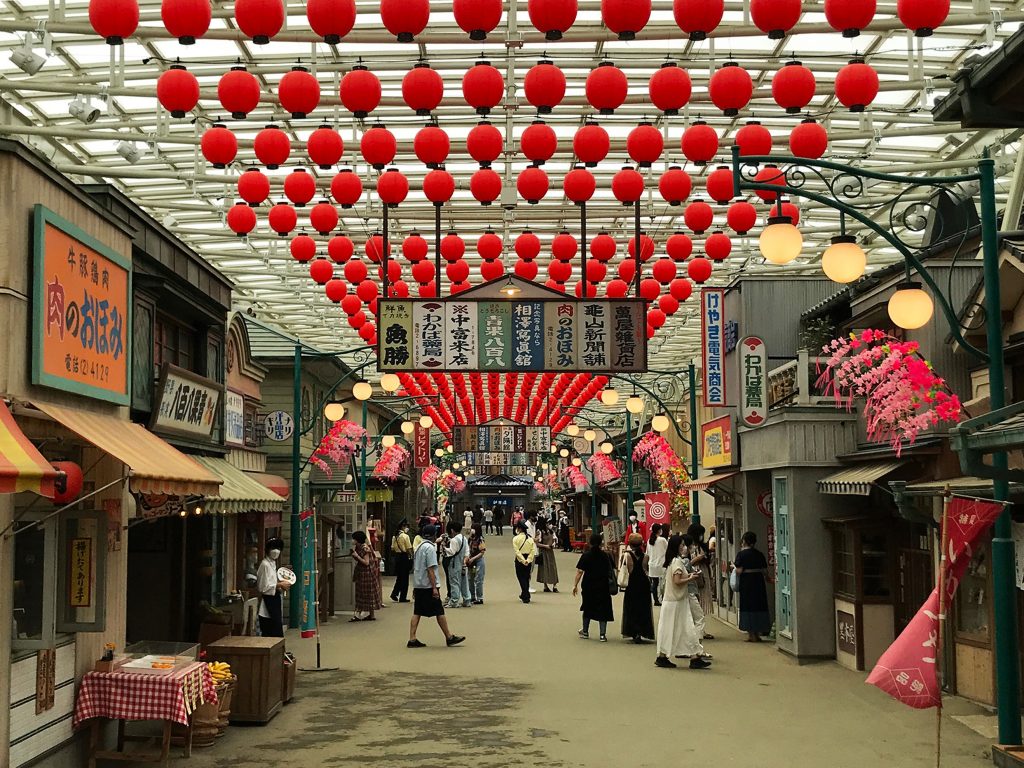
Seibuen Amusement Park in Tokorozawa, Saitama, reopened as a theme park from the Showa era that was inspired by Tokyo in the 1960s after receiving a significant renovation. (Source: Internet)
The fact that this park has its own currency representing the costs during that period completes the Showa experience and makes it much more intriguing. Seibuen Amusement Park day passes cost 4,400 yen∼30.98 USD for adults and 3,300 yen∼23.23 USD for kids.
Seibuen Amusement Park
Address: 2964 Yamaguchi, Tokorozawa City, Saitama
Opening Period:9:00 a.m. to 7:00 p.m. (exact schedule may vary)
Closing Days:irregular holidays
Accommodations in Saitama, Japa
Budget Hotel
Coco Stay Nishikawaguchi Ekimae
In Kawaguchi, Saitama, Coco Stay Nishikawaguchi Ekimae provides contemporary lodging. A desk, an electric kettle, air conditioning, and complimentary toiletries are included in each room. A communal lounge has a table, seats, and hammocks. Coco Stay Nishikawaguchi Ekimae is only a 2-minute walk from a number of eateries and convenience stores.
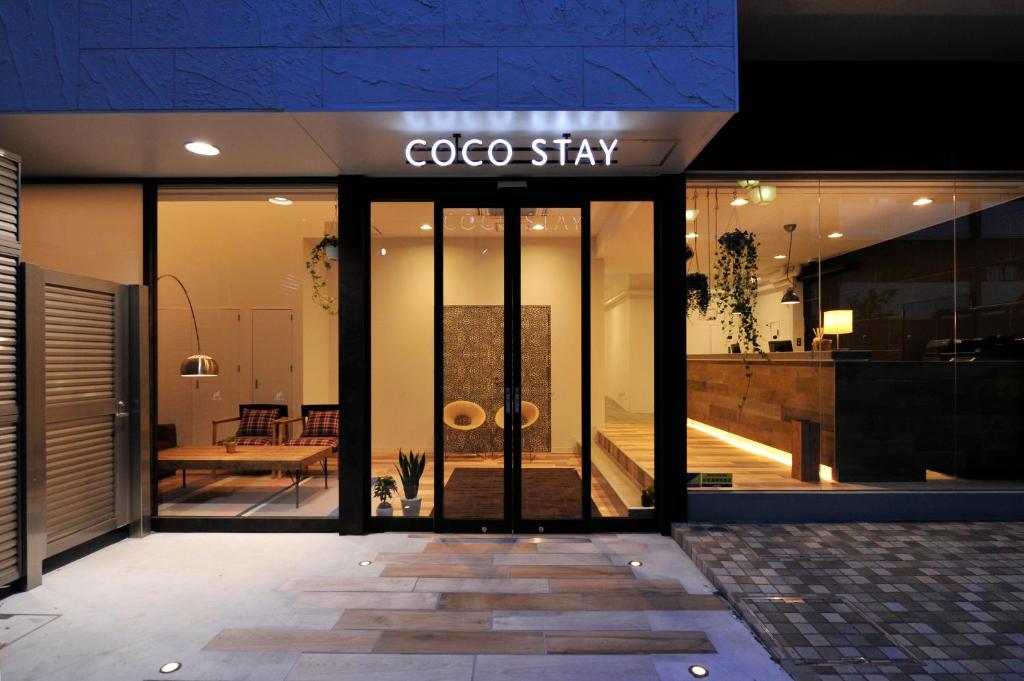
In Kawaguchi, Saitama, Coco Stay Nishikawaguchi Ekimae provides contemporary lodging. (Source: Internet)
Price: A double room with a shared bathroom that is non-smoking with a free cancellation is available for a starting price of 47 USD per night.
Luxury Hotel
Kawagoe Prince Hotel
The Kawagoe Prince Hotel, which has a direct connection to Hon-Kawagoe Train Station, provides a 24-hour front desk and accommodations with free WiFi. In addition to a flat-screen satellite TV, each room has a refrigerator and an electric kettle with tea bags.
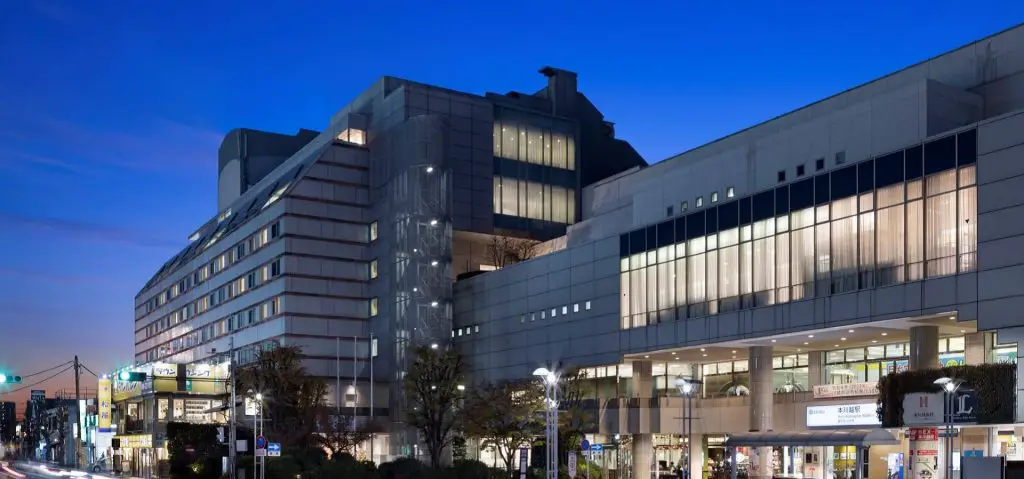
The Kawagoe Prince Hotel, which has a direct connection to Hon-Kawagoe Train Station, provides a 24-hour front desk and accommodations with free WiFi. (Source: Internet)
A bathtub and complimentary toiletries are featured in the private bathroom. In contrast to Kokiden, which serves lavish Chinese cuisine, Etoile Restaurant offers substantial buffets, including a Japanese/Western breakfast buffet.
Price: A Standard Double Room – Non-Smoking starts at 137 USD per night, which includes taxes and fees. You can add 21 USD for breakfast, and you can cancel free of charge.
Obtain – How to reach Saitama
-
By Train
Omiya Station is easily accessible by train from Tokyo Station in 25 minutes via the Shinkansen, 31 minutes through the JR Takasaki Line, and the same time via the JR Utsunomiya Line.
The Takasaki Line travel time from Ueno Station to Omiya Station is 26 minutes.
Ikebukuro Station is the departure point for a JR Saikyo Line Rapid train bound for Kawagoe, which takes 25 minutes to reach Omiya Station. Between Shinjuku Station and Omiya Station, the JR Saikyo Line travels there in 30 minutes whereas the JR Shonan-Shinjuku Line does it in 32.
-
By Shuttle
The Railway Museum has its own stop on the elevated New Shuttle Line of Saitama New Urban Transit. It is called Tetsudo Hakubutsukan (the Railway Museum in Japanese), and it is only a short distance from Omiya Station.
The New Shuttle is a rubber tire railway system that is frequently seen as airport shuttles and is also referred to as a people mover. It is somewhat uncommon to see it used as a commuter train system for city traffic. But in Omiya/Saitama City, it operates in such a manner.
Omiya appears to make an effort to always be innovative. Omiya may be a nice place to keep in mind if you want to keep up with urban transportation trends.
FAQs
1. What is Saitama well known for?
Saitama is well-known for its sake, and there are about 35 breweries spread out across the prefecture. Before tasting a freshly fermented batch, visitors at Sake-zukuri-no-mori have the opportunity to take a tour and observe the brewing process firsthand.
2. What Saitama delicacies are well-known?
Local food known as “Suttate” has been handed down through farming families in Kawajima for countless generations. Suttate is normally produced by pulverizing Japanese ginger, cucumber, and the Asian herb shiso in a pestle and mortar before adding stock or water.
3. How is the city of Saitama?
Saitama is renowned for providing the ideal blend of city and rural life, and there are numerous natural things to discover. The Mt. Hiwada- Mt. Takasashi- Mt. Monomi hiking trail offers a lovely experience of exploring forests, waterfalls, and hidden shrines. Mount Buko is a well-known hiking destination. The Arakawa River allows you to enjoy stunning nature in a wooden riverboat.
Final Thoughts
Travelers who remain in Tokyo or are sick of the crowds in Tokyo are strongly encouraged to visit Saitama. Saitama, the neighboring prefecture to Tokyo, is less crowded with tourists, allowing you to more easily take advantage of the things to do in Saitama. For more details on Tokyo, see the articles below.

